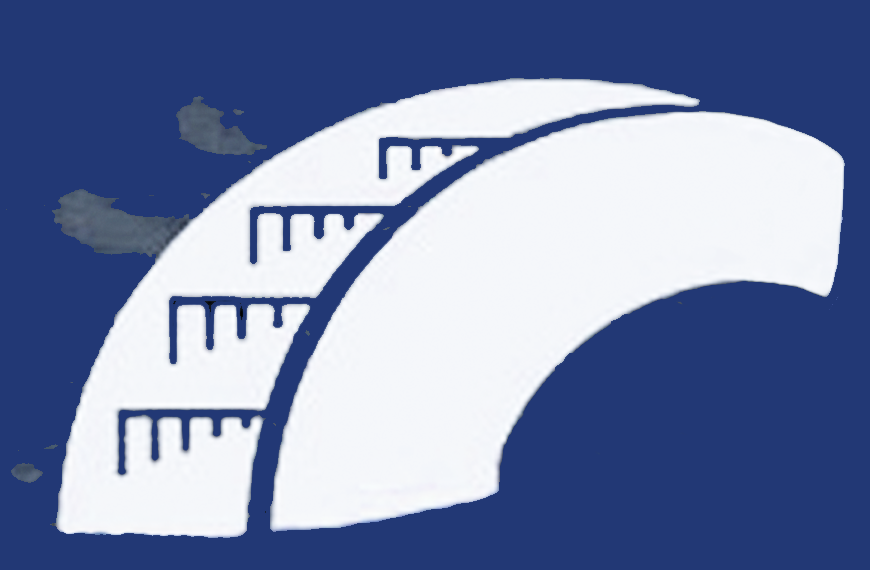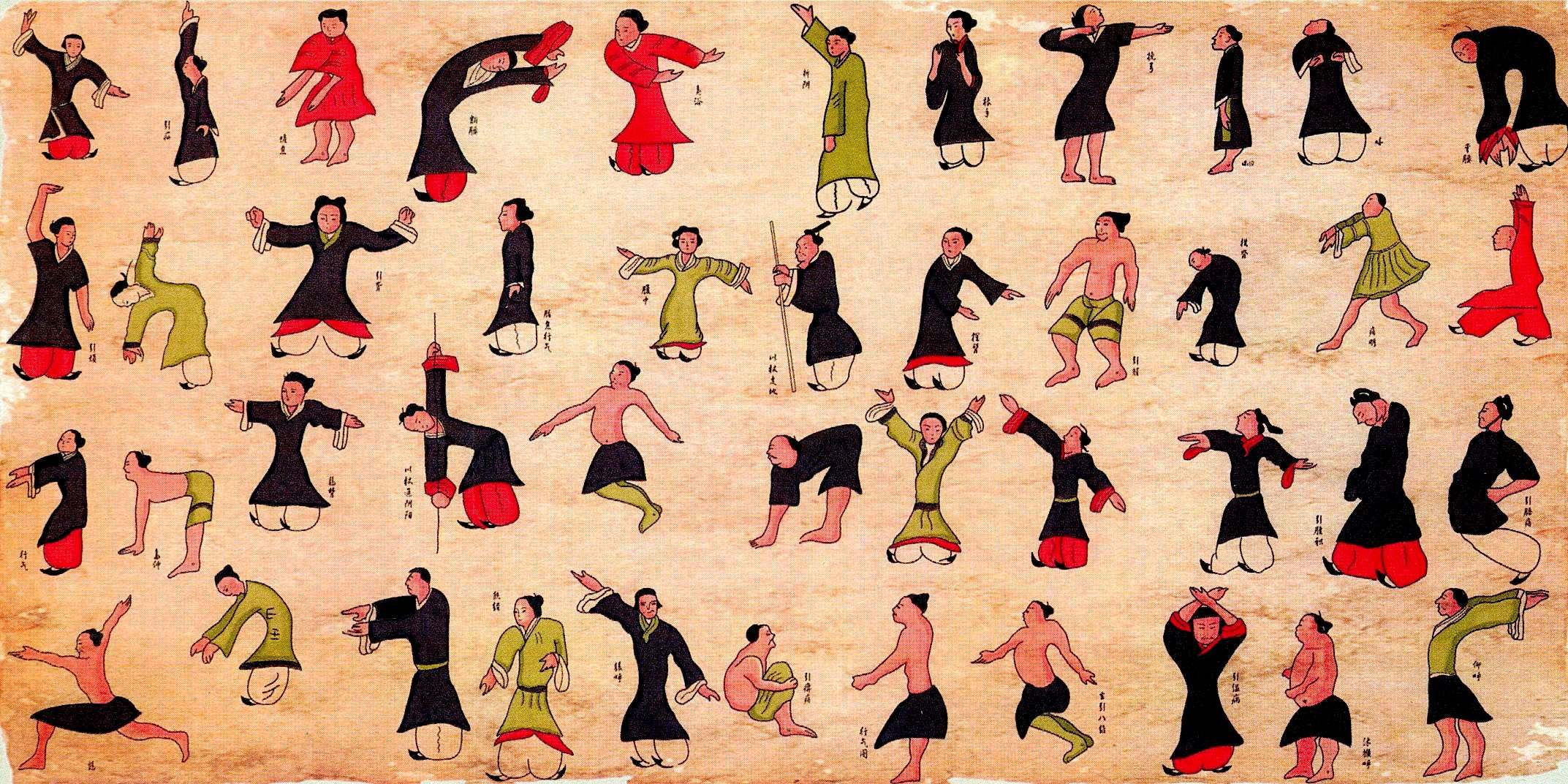Defining Channel-based Therapeutic Movement
"Channel-based therapeutic movement is typically defined as range of motion exercises involving the limbs and torso with the intention of regulating qi and Blood in the channels and collaterals, joints, and zangfu viscera as well as other subtle bodies, such as the dantian.[1] As is typical of medical qigong texts, I include self-massage (按摩功 ànmógōng) in this category as the mechanisms of action overlap, without being identical from a traditional Chinese medicine (TCM) perspective.
In contemporary Chinese, the closest equivalent term to “therapeutic movement” would be 动功 (dònggōng) or dynamic development. In this context, the word “dòng” simply means moving or active.[2] “Gōng” is a significantly more complex term that refers to the broad historical context of self-development, or skills and achievement, in traditional Chinese arts, particularly what have been called “body technologies” (Palmer, 2007).
While the term dònggōng typically refers to movement of the limbs, it also applies to any gross movement of the torso, including flexion-extension, torsion, etc. Following this understanding, the text includes simple breathing exercises (吐納 tǔnà) that depend on coordination of the diaphragm with the many accessory muscles also involved in postural support and mobilization. These “breathing exercises” are some of the most effective and easily utilized interventions as well as being essential to understanding the relationship between breath, intention, posture and movement.
Channel-based therapeutic movement is closely related to the ancient category of dǎoyǐn (导引), or “guiding and pulling” exercises. Two excavated manuscripts from the 2nd century BCE, the Daoyintu 导引图 and Yinshu 引書, clearly document this tradition of prescriptive therapeutic movement rooted in the mechanism of qi.[3] These exercises were applied to a wide range of both musculoskeletal dysfunction and internal illness. Unfortunately, this medical tradition has only been sparsely documented until the mid 20th century.[4]
In contemporary practice, therapeutic movement falls under the broad modern category of “qìgōng,” an umbrella term for a wide variety of techniques for the development of skills in sensing, understanding, mobilizing and acquiring reserves of qi. Qigong includes both dynamic and tranquil, meditative training. The term has also come include the “external” application of the qigong doctor’s own qi to the patient as a corrective medical intervention. Most contemporary medical qigong texts devote a significant amount of space to developing skills in “qi emission therapy” (外氣疗法 wàiqìliáofǎ).[5]
I have chosen to avoid the term "medical qigong" in order to focus attention on a specific therapeutic modality, one that has wide acceptance in contemporary Chinese medicine practice and is easily employed in the clinic. In addition, the term qigong has unfortunate associations rooted in the inflated popular and scientific expectations of the 1980s and 90s in China, including the rise of charismatic “qigong masters.”[6] For this text does not aim to provide a path toward qigong “mastery” but rather a system of simple clinical intervention through one modality, therapeutic movement.
However, the context of modern qigong therapy has produced many useful ideas that this text makes use of, such as the “three regulations” (三正 sānzhèng, 三調 sāntiáo) of Heart-mind, breath-qi, and form-body.[7] Contemporary qigong has also brought back a focus on specific medical intervention. However, since medical qigong textbooks focus on qigong as a primary intervention rather than a simple adjunctive technique, protocols tend to be long and complex, requiring a significant body of practical knowledge on the part of the patient as well as significant time commitment on a daily basis. This approach is not practical for most western clinics and patients. The approach of this textbook will focus on how to teach a single well-define exercise to best effect.
[1] In translating and transliterating Chinese terms in pinyin or English (including capitalization), I follow primarily Deadman (1998) and occasionally Wiseman (1998).
[2] Throughout this text, I will use the term “exercise,” which some readers may object to as reductive. However, related terms commonly appear in Chinese texts (dòng is an element of many compound words for “exercise”) and the word is useful in communicating with patients unfamiliar with the context of Chinese therapeutic practice and qi development.
[3] These ancient manuscripts show that the specific application of therapeutic movement was already a well-developed idea at the same time the Neijing was being compiled and likely a formative influence on the channel theory essential to the development of acupuncture (Harper 1998; Lo 2001).
[4] There has also been a tendency to group therapeutic exercises in practice sets and emphasize their role in general health maintenance rather than detail the application of individual exercises to specific conditions except in the most general way (e.g. “rectify Spleen and Stomach”).
[5] The required amount of initial training and daily practice for a practitioner to employ qi emission therapy safely and effectively is regarded as much greater. Qi emission therapy presents other problems as well. From within the tradition come warnings that it is easy for the practitioner to seriously deplete their own qi if personal development is not scrupulously attended to. In the professional context, qi emission therapy is one of the least recognized modalities of traditional medicine, treated with both skepticism and caution by medical authorities both in China and abroad.
[6] The development of a medical syndrome “qigong deviation” (氣功偏差 qìgōngpiānchā) also dates to this period of exaggerated expectations that seems to have contributed to unwanted symptoms associated with incorrect practice. The risks associated with qi deviation will be discussed below.
[7] In order to include many types of traditional self-development practice, the modern category of qigong was broadly defined by its shared methodology: the simultaneous regulation of Heart-mind, breath-qi, and form-body (正心 zhèngxīn, 正氣 zhèngqì, 正形 zhèngxíng).

